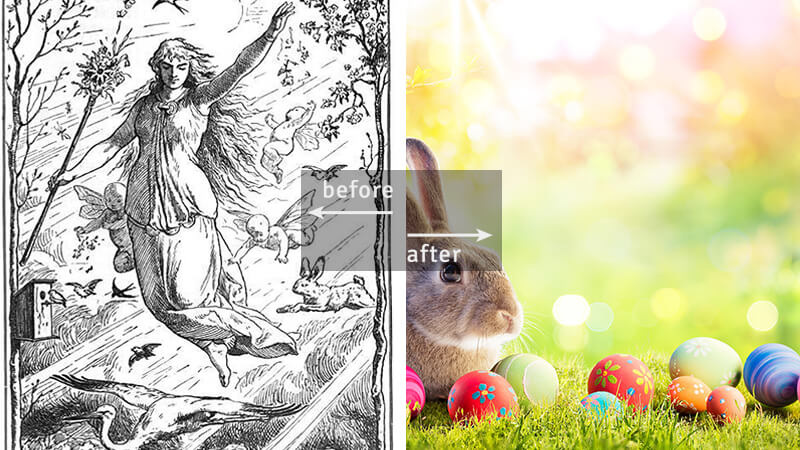The Pagan Origin of Easter: Roots of Principal Christian Holiday
Easter, principal festival of the Christian church, honors the Resurrection of Jesus Christ on the third day after his Crucifixion, according to the New Testament of the Bible․ Its a holiday celebrated by millions of people around the world and also the day that children excitedly wait for the Easter bunny to arrive and deliver their treats of chocolate eggs.
Although Easter is a Christian holiday, its roots and many of its traditions go behind to ancient pagan customs and beliefs. Let’s dive into the origins of Easter and see what habits and holidays it is linked to.
1. Resurrection as a Symbol of Rebirth
before
One of the theories is the consideration of Easter story of crucifixion and resurrection as a symbol of rebirth and renewal, like the cycle of the seasons – the death and return of the sun.
According to some scholars, such as Dr. Tony Nugent from Seattle University, the Easter story comes from Sumerian legend of Damuzi (Tammuz) and his wife Inanna (Ishtar), an epic myth called “The Descent of Inanna” found inscribed on cuneiform clay tablets dating back to 2100 BC. After the death of her husband, Ishtar follows him to the underworld. She enters through seven gates and her worldly attire is removed. She is judged, killed and then hung naked on a stake. After the three days Inanna and Damuzi are being resurrected and given a power to return to the Earth as the light of the sun for six months. After the six months are up, Tammuz returns to the underworld of the dead, remaining there for another six months, and Ishtar pursues him, prompting the water god to rescue them both. Thus were the cycles of winter death and spring life.
The story of Inanna and Damuzi is just one of a number of accounts of dying and rising gods that represent the cycle of the seasons and the stars. For example, the resurrection of Egyptian Horus; the story of Mithras, who was worshipped at Springtime; and the tale of Dionysus, resurrected by his grandmother.

2. Easter as a Celebration of the Goddess of Spring
before
Another theory is that Easter was originally a celebration of Eostre, goddess of Spring, otherwise known as Ostara, Austra, and Eastre.
Celebrated at Spring Equinox on March 21, Ostara marks the day when light is equal to darkness, and will continue to grow. As the bringer of light after a long dark winter, the goddess was often depicted with the hare, an animal that represents the arrival of spring as well as the fertility of the season.
Most analyses of the origin of the word ‘Easter’ agree that it was named after Eostre, an ancient word meaning ‘spring’, though many European languages use one form or another of the Latin name for Easter, Pascha, which is derived from the Hebrew Pesach, meaning Passover.

3. Easter and Its Connection to Jewish Passover
before
Easter is also associated with the Jewish holiday of Passover. Some early Christians used to celebrate the resurrection of Jesus on the same date as Passover.
In 325 AD, Emperor Constantine convened a meeting of Christian leaders to resolve important disputes at the Council of Nicaea. Since the church believed that the resurrection took place on a Sunday, the Council determined that Easter should always fall on the first Sunday after the first full moon following the vernal equinox. Easter has since remained without a fixed date but proximate to the full moon, which coincided with the start of Passover.

after
Whether it is observed as a religious holiday in honor of the resurrection of Jesus Christ, or a time for families in the northern hemisphere to enjoy the coming of Spring and celebrate with egg decorating and Easter bunnies, the celebration of Easter still retains the same spirit of rebirth and renewal, as it has for thousands of years.
Main image: Relief with Phanes, c. 2nd century A.D. Orphic god Phanes emerging from the cosmic egg, surrounded by the zodiac.
Public domain / Easter eggs / gettyimages
Source: AncientOrigins





